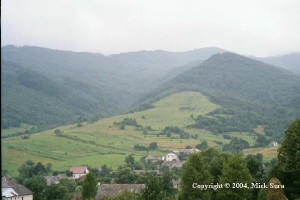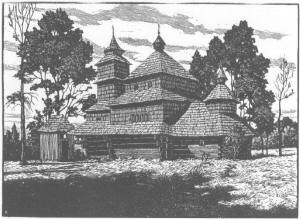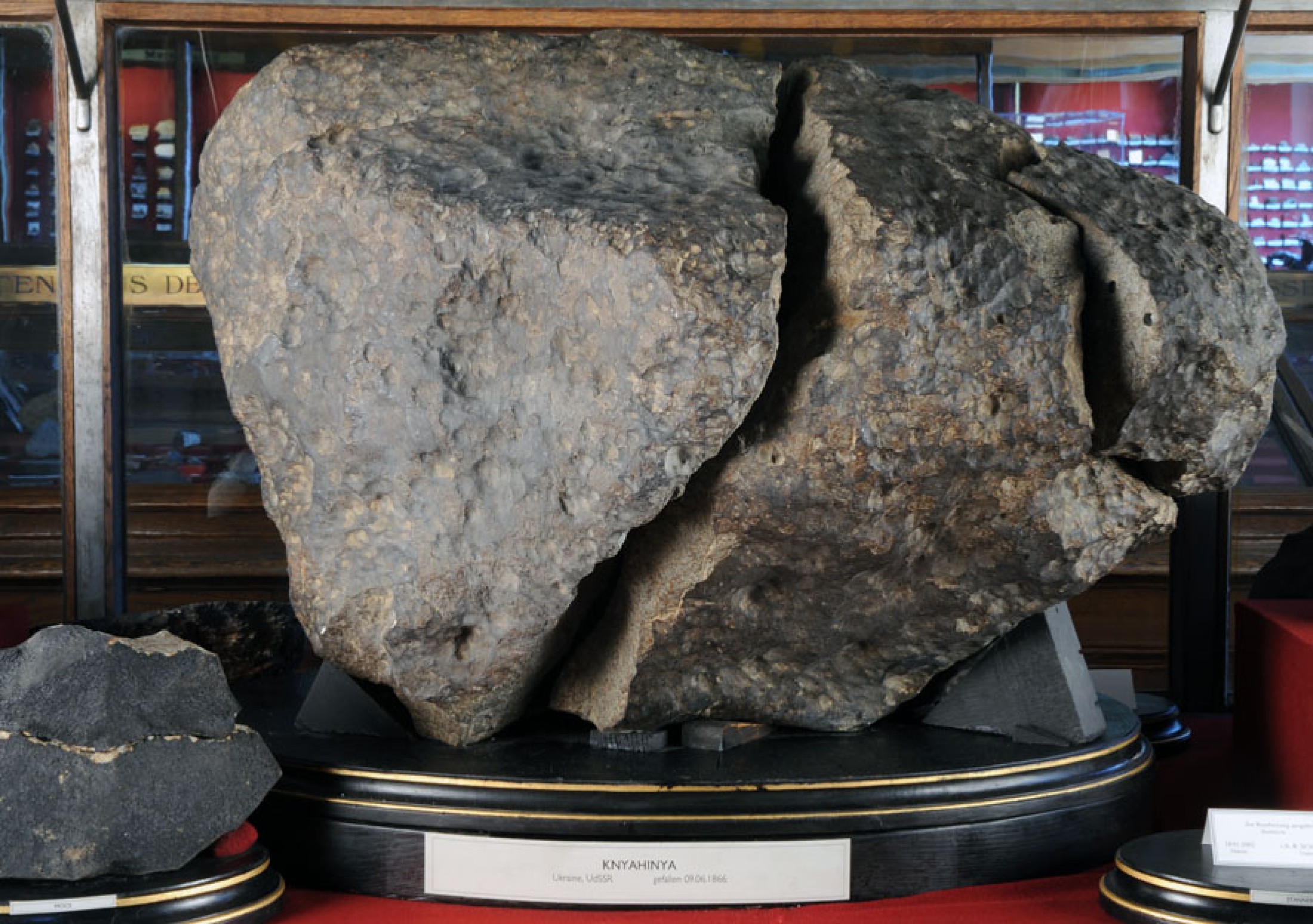| Slovakia Genealogy Research Strategies | ||||||
| Home | Strategy | Place Names | Churches | Census | History | Culture |
| TOOLBOX | Contents | Settlements | Maps | FHL Resources | Military | Correspondence |
| Library | Search | Dukla Pass | ||||
ZBOJ (Harcos/Harczos, Zbuj)
|
Village Information |
Village Links |
Regional |
|
Online Book: Below Snina Rock (1964) |
||
|
Online Book: History of Ulic, Slovakia (1996) (PDF) |
||
|
History of the Ulic Valley, 2002 (rewrite of the 1996 version) |
||
|
(photos and essay) |
1914 Zemplin County Map (714KB) |
|
|
Church Description from Rusyn-Ukrainian Institute at Svidnik |
||
|
|
||
Highlights
Zboj is the village of my ancestors, TARKULIČ, LESKO . My grandfather, PETER TARKULICS left the village in 1904 for a new life in America. Nearly a hundred people left this village for America. The majority initially settled in Scranton, Pennsylvania. The people in this village socialized and worked primarily with people from Nova Sedlica and Rusky Potok. Ulic was and still is the administrative center for this village.
Peasant farming, shepherding and forestry were the primary sources of income until the end of World War II.
While this page may not reflect it, I have done extensive search on this village and its' people. I am in continual contact with friends and family from Zboj and environs. I will continue to provide substantial updates as time permits. - Bill Tarkulich
| First Mentioned | 1567 |
| 2001 Population |
Total 448 36 Rusyn, 47 Ukrainian, 571 Other 264 Orthodox, 69 Greek Catholic, 321 Other |
| 1914 Population |
1002 22 Magyar, 38 German, 928 Ruthenian; 36 Roman Catholic, 921 Greek Catholic, 44 Jew |
| 1910 Population Peak | 1,002 |
| Total Area |
5,054 hectare |
| Adjacent Village(s) | Nová Sedlicá, Wetlina, Poland, Stuzycja, Ukraine |
| Ownership | Originally owned by the Humenne Estate, later passed to the Csaky family in the 18th century and then to the Schmidegh family in the 19th century. Later in the 20th century, it was owned by the Lobkowitz family. |
History, Vasil Fedič, 2003
The earliest mention of the village was in the tax register from 1567. The village was established according to the Walachian laws by a šoltýs (Editor’s note: A šoltýs was a man contracted by the landowner to create a village) and established around the year 1550. Until the last quarter of the 17th century it belonged to the Humenne estate of the Drugeth family. In the 18th century it was owned by Csáky family, in 19th century it was the property of the Schmideg family. At the turn of the 19th century it was owned by the Lobkovitz family.
In 1715 the village contained 28 buildings with 9 occupied houses. In 1720 a village mill operated. About a half century later there were two mills, operated by Leco Čopák and Jacko Čopák. The Zboj and Nová Sedlica residents processed wool in nearby Stara Stužicí village (Note: after 1945 it was across the country border, having become a part of Ukraine). In 1787 there were 71 houses, in 1828, 88 houses. Villagers were engaged in agriculture, cattle-raising, and occasionally they worked in the forest. Early in the 20th century a community saw-mill was established. Another source of work was the narrow-gauge railroad running from Zboj to Nová Sedlicá, established in 1901. In 1930 the rail connection to the Bystra station was constructed. During the 1st World War, when the battle front stopped here for about five weeks, the village was almost totally destroyed. Afterwards, lives in the first Czechoslovak Republic were filled with difficult living conditions, and many residents were attracted to work overseas.
In 1939-1944 it was one of 44 villages annexed to Hungary. Troop conscription in 1941 drew 80 men from the village, drafted into the Hungarian army and 1944 saw Jewish residents deported from the village. After a very difficult struggle, Zboj was liberated on 18 (24?) October 1944. The village was very badly damage and along with an area around the village completely mined. In minefields, 21 people were killed and 22 seriously injured.
After the 2nd World War, 69 residents emigrated to Czech lands to find work. Others moved to Kosice. In 1945 the woodland administration was established in the village. One year after the war, on 23 November 1945 bandits invaded and murdered a few residents. Primary school education resumed. The first bus route to the region operating from Snina to Ulič to Zboj was opened on 17 July 1947.
In 1955 a post-office was established in the village. In 1960 the community was electrified and a modern building for primary schools with a gymnasium was constructed. A year later a nursery school came to the village. A new brick church was built in 1966. In 1973 a local farm LPM S. P., ULIČ was established. In the village there is a restaurant, store and a small shop with refreshment.
Reproduced with Permission.
1567 Zboy. It is mentioned for the first time in 1567. It belonged to Humennč town, to Csaky family in the XVIII century, to Schmidegh in the XIX century and to Lobkowitz in XX century. During the History, its inhabitants were occupied as woodmen. Source: Roberto Cannoni, Italy
METEORITE Strikes in the Area - 1866
Thanks to Rich Custer for alerting me to this "factoid."
The largest single mass seen to fall is one of those which came down at Knyahinya, Ukraine See also: HUNGARY (Hungarian Magyarorszdg) Hungary, in 1866, and weighed 547 lbs; Knyahinya is the next neighboring village to the east.
"In June, (9, 5pm) 1866 at Knyahinya, a village of Hungary, a shower of stones fell, the largest which weighs about 5 cwt; it was broken in the fall into two pieces, both of which are now in the Imperial Collection at Vienna
"History of the fall: A fireball was first noticed in northern Hungary above the town now called Liptovský Mikuláš and flew some 220 km to the east until exploded with thunderous detonation above Knyahinya, producing a black cloud. A shower of stones fell from the cloud with a whizzing noise. Then the black cloud turned to a grey cloud of dust, moving southward and dispersed by the wind. Some 1200 stones fell in a ~7 km × 4 km strewn field in the vicinity of Zboj (now Slovakia), Nova Stuzhitsya, Knyahinya and Strychava (now Ukraine) but nobody was injured. The Hungarian Academy of Sciences sent a commission to visit the scene. The largest recovered specimen (now in the Natural History Museum in Vienna) weighed some 300 kg, the second largest (46 kg) one was bought for 750 florins for the Hungarian National Museum (destroyed by fire in 1956)."
"Two scientific persons commissioned by the Governement at Pesth to inquire into the circumstance of the meteroic fall at Knyahinya, June 9, 1866 reported that "at Eperies, fifty-five miles west of Knyahinya, the meteor presented the appearance of a burning birch rod. The handle , which was directed foremost, was deep red; and the meteor shot over Saros and Zemplin to a point due east, where it burst, scattering its fragments in all directions and houses shook with the explosion."
Source: Abstract in Proc. Brit. A. A. S. 1866, p.133. References by American Geologist, Volume XVII Jan-June, 1896, Minneapolis, Minn. 1896
Landmarks
-
The St. Nicholas church was sanctified in 1706. The rustic wooden church had a three-space design with sacristy, square nave and a women’s section. In 1966 the church was moved to the open-air museum in Bardejov. It is regarded as one of the finest wooden chapels (cerkví) in Carpathia.
-
Peter Lodij (1764?-1829), a philosopher and attorney was born in the village. A plaque inscription noting this significant native was placed at the village culture house.
Church
Orthodox Chrám Zostúpenia Svätého Ducha
Affiliated church: Nová Sedlica – Chrám Zosnutia Presvätej Bohorodičky
(Both villages were formerly Greek Catholic. The wooden structures were removed to skanzens and new edifices built thereafter. However, Even after the repatriation of buildings to the Greek Catholics in the 1990s, these two churches remained with the Orthodox.)
BUBAJ, CHOMA, COPAK, DOHUN, DZUBA, FEDASKO, FEDIC, GUZAN, HANDOGA, HLODINK, HRIB, HRICSINDA, KACSALA, KACSUR, KOCAN, KOVAL, LADOMIRJAK, LEGDAN, MIKA, PASINSKA, ROHUTANICZ, RUSIN, SICAK, TARKULIC
GERTNER, SZENSZKI, MOSKOVICS, ROSENBERG, SZIMION, HANDOGA, HRICZIK, KOLCZYK, YZISZTUN, GARTNER, GERTNER, KOSZTOVALY, LOPOCH, MARCZA SZUCHI, FUTTER, VISILENK
Surnames - 1869 Census
Zboj had 88 houses recorded. The majority of it's
citizens were Greek Catholic and illiterate.
Surnames: CHOMA, KOCSAR, KOZAK, FISZKA, SZISAK, LECKO, CHNDAMICS, CSOPAK,
OLENICS, PAULISAK, HLIVKA, RUNCZAK, FEDICS, KOCSAN, SINZAK, SZVIZTUN, MAGADA,
SZANSKI, PITRAN, LUCZA, VEISZ, COPAK, KNYARZ, LYILYO, GRUBERG, BANYIK, LEGDAN,
MUZIKA, GULA, PETROKA, CSOPAK, TARKULICS, MIZULANICS, GRUNBERGER, ROTH, MARCSA,
PAZANICS, CZUKOVJAT, TOTIK, SEPETA, FETORJAK, KACSAL, KACSALA, DOHUN, SANTA,
MACZAKALY, DUNACSAK, CZITZAK, RUSICS, VAJDA, KOVALY, FUTER, RUSICS, BUKAJ, PIEZA,
HORKLA, PEROV, BRAZTIG, SELEPA, BALOGH, DUNAJCSAH (DUNASH), DOHUN, HRINYKO,
ROTH, VEIJZ, HLADINKA.
LDS Film # 0719802
Photo Credit: Bill Tarkulich, Mick Sura, 2001; Wood cut of Zboj (Zbuj) church, J. Rericha, pre-1940. Contributed by Rich Custer.
Links to off-site webs will open in a new window. Please disable your pop-up stopper.
Last Update: 15 November 2020 Copyright © 2003-2021, Bill Tarkulich

















